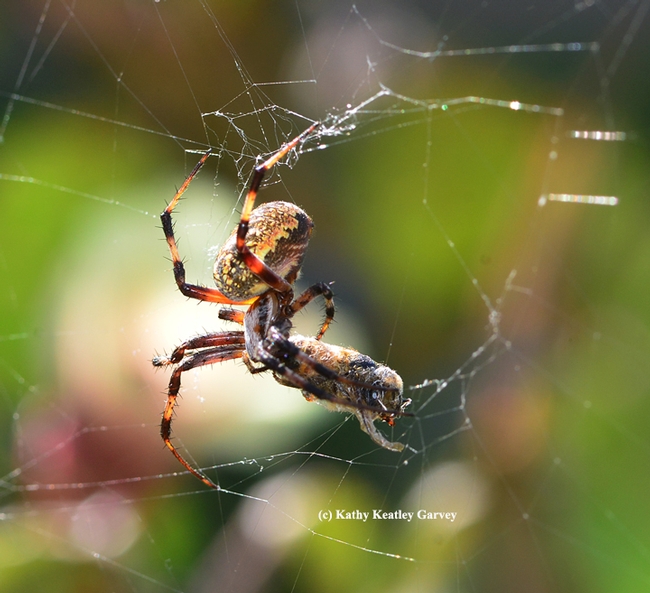
Putting Life Back Into the Garden
A letter from Amina Harris, Director of the Honey and Pollination Center, about The Good Life Garden:
When I started my tenure as the director of the Honey and Pollination Center at UC Davis, I’d walk up to the Robert Mondavi Institute that housed our office through the Good Life Garden. Beautifully planted with fruiting trees and shrubs, hummingbirds, butterflies and an assortment of native bees, wasps and flies were always working. In addition to these permanent plantings, annual vegetables from squash to tomatoes, would attract even more native pollinators to the garden, about an acre in size. I marveled at the diversity.
Working with the UC Davis Arboretum and Public Garden, we developed a program that would include in-depth explanatory signs concerning pollination and even a demonstration bee hive. Those plans were put on hold when the Department of Viticulture and Enology began to enact its long range plan. The annual garden was removed and the rest of the garden was disrupted for well over a year as a huge underground cistern was put in place below the garden’s central lawn. The cistern, in conjunction with other machinery in the Jackson Building would contribute to making the LEED Platinum Teaching and Research Winery completely self-sufficient.
Once the cistern was complete, the Arboretum began the slow work of bringing the garden back – but the vision had changed.
After many meetings with professors and staff at the Institute, a multi-faceted garden is being created. Most of the fruiting trees and shrubs remain. Gorgeous aromatic, open faced roses are filled with bees and wasps. The occasional dragonfly lands. An entire new irrigation system has been developed – one that caters to the various needs of such diverse plantings. Some of it is sprinkler driven while other parts are moveable drip irrigation. Plans include signs on a self-guided walk to explain the creativity and diversity of pollination.
Raised garden beds have been added. These are managed by a group of UC Davis students in the Learning by Leading program of the Arboretum. Student leaders attend “weekly meetings and workshops aimed at providing training and hands-on experience in ecological horticulture and leadership development.” The beds are planted with seasonal vegetables and harvested for The Pantry, a student run program with the goal “to provide non-perishable, high protein food for UC Davis students struggling to pay for meals.”
Today, when I came to work, the garden was literally swarming with Arboretum volunteers, digging, raking, composting under the direction of Stacey Parker, Arboretum Gateways Horticulturist – all in preparation for this year’s penultimate planting, the one we have been working towards for the past two years.
In addition to the student garden beds, others will be filled with perennial herbs, some vegetables and flowers. The beehive is back on the schedule, to be managed by the Department of Entomology and Nematology.
I’ve noticed the pollinators are returning. The basil, soon to be harvested, is covered with bees. The hummingbirds dart in and out. Persimmons are beginning to turn orange. The bay leaves are aromatic and the lemons and oranges… ahhhhh.
Where we are: http://www.goodlifegarden.ucdavis.edu/location
More information about the Arboretum: http://publicgarden.ucdavis.edu/learning-by-leading/edible-landscaping
Life in the Garden



